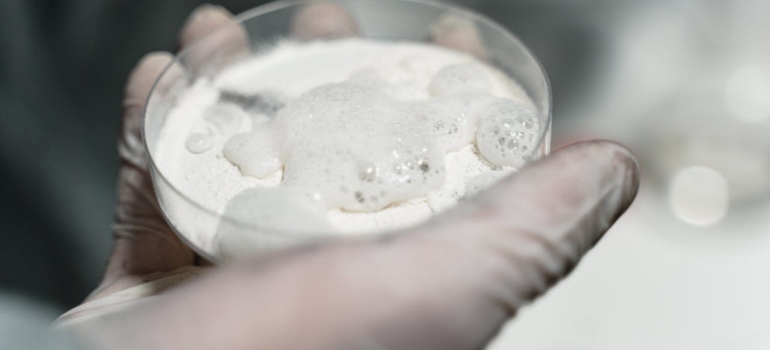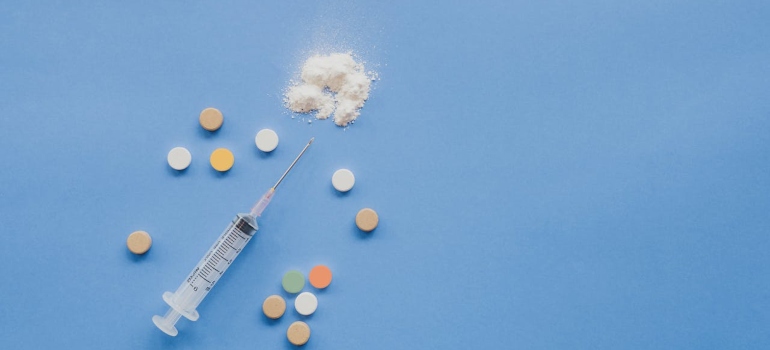Cocaine use is a serious health risk, and one common problem people face is frequent nosebleeds. If you snort cocaine, the irritation can dry out your nasal passages, damage blood vessels, and cause bleeding. A nosebleed after cocaine might seem small, but it could be a sign of more serious damage to your nose or even other parts of your body. If you’re experiencing nosebleeds or other signs of damage from cocaine, it’s crucial to get help. Getting treatment early in Harmony Ridge Recovery Center WV can prevent further harm and improve your health.
Understanding the Connection Between Cocaine and Nosebleeds
For those struggling with cocaine addiction, a common concern is whether it’s possible to force someone to go to rehab. Cocaine use, especially when snorted, can have serious effects on the nasal passages and internal systems of the body. It directly impacts the sensitive tissues inside the nose.

Over time, this repeated irritation leads to :
- dryness,
- swelling,
- damage to blood vessels.
This makes the nose more likely to bleed, often resulting in frequent nosebleeds. Cocaine causes the blood vessels in the nose to constrict, limiting blood flow. When the drug wears off, these vessels can weaken and break, causing the nosebleeds. The damage to the nasal passages is not just temporary but can become permanent with continued use. So, if you or someone you know is experiencing nosebleeds from cocaine or other signs of damage, it’s important to look for help from a drug rehab center Athens OH doctors recommend.
Can Cocaine Cause Nosebleeds?
Yes, cocaine can cause nosebleeds. The act of snorting cocaine directly damages the tissues inside the nose. The drug irritates the nasal mucosa, which is the lining that keeps the nose moist. When cocaine is inhaled, it dries out these tissues, making them more fragile. This damage weakens the blood vessels, which are more likely to rupture and cause bleeding. The more frequently cocaine is used, the greater the damage to the delicate structures inside the nose. Even a small amount of irritation from snorting cocaine can result in bleeding, and with repeated use, these bleeding episodes become more common and severe.

Snorting Cocaine and Nosebleed From Cocaine: Why It Happens
Repeated cocaine use is a major factor in chronic inflammation and damage to the nasal passages. When someone uses cocaine regularly, the constant irritation keeps the tissues swollen and inflamed. This inflammation makes it harder for the nose to heal properly, leading to ongoing damage. Over time, the internal structures of the nose, such as the septum (the wall between the nostrils), can suffer severe harm. In some cases, this damage can lead to a perforated septum, a hole in the cartilage that divides the nostrils. A perforated septum can cause more frequent nosebleeds, breathing difficulties, and even permanent changes to the shape of the nose.
Some people experience more severe or frequent nosebleeds than others, depending on how often and how much they use cocaine. The amount of cocaine used, the frequency of use, and how deeply it is inhaled all contribute to the level of damage done to the nose. Those who use cocaine regularly and in large amounts are at a much higher risk of developing serious issues like a perforated septum or chronic nosebleeds. If you are dealing with these issues, getting help at an inpatient drug rehab in WV can provide the support needed for recovery. These centers offer care to heal both the physical damage from cocaine use and the addiction, helping individuals get their health and lives back on track.
Take Action
Understanding the link between snorting cocaine and nosebleeds is important, especially for those who might be unaware of the extent of the damage caused by the drug. If someone you know is experiencing nosebleeds after using cocaine, it’s essential to take action and go to cocaine rehab. The risks of continued use can be severe, not only affecting the nose but also leading to long-term health complications.

Risks Associated with Cocaine Use and Nosebleeds
Cocaine use poses serious health risks, especially when it comes to the nose and the blood vessels in the body. One of the most common and visible signs of damage is frequent nosebleeds, but the risks go far beyond just the nasal passages. Cocaine can lead to long-term damage to the nose, including chronic inflammation, tissue breakdown, and even perforation of the septum, the cartilage that separates the nostrils. This damage occurs because of the way cocaine affects the blood vessels in the nose. Cocaine causes these vessels to constrict, limiting blood flow. For young people struggling with cocaine use, looking for help at a drug rehab for young adults can provide the support needed to address both the physical damage and the addiction, promoting recovery and overall well-being.
What Drugs Can Cause Nosebleeds?
While cocaine is a well-known cause of nosebleeds, other drugs can also lead to similar symptoms. For example, methamphetamine use can cause dry, irritated nasal passages and lead to frequent nosebleeds. Certain prescription medications, like blood thinners or nasal decongestants, may also cause the blood vessels in the nose to weaken, leading to bleeding. However, cocaine stands out for its specific ability to constrict blood vessels, causing them to become fragile and easily ruptured. Unlike other substances, cocaine’s vasoconstricting effects are often intense and long-lasting. This combination of factors, along with the damage caused by repeated snorting, makes cocaine especially harmful to the nasal tissues. The irritation caused by cocaine can lead to severe chronic inflammation, increasing the risk of permanent damage to the nasal passages.

What Are the Symptoms of a Cocaine Aneurysm?
One of the most severe risks associated with cocaine use is the development of an aneurysm, which can occur in the nasal or brain regions. Cocaine can weaken blood vessel walls, causing them to bulge and potentially rupture. In the nasal passages, this may lead to a condition known as a nasal aneurysm. If the aneurysm bursts, it can cause heavy, uncontrolled bleeding. In the brain, cocaine can contribute to the development of a cerebral aneurysm, which can be life-threatening. Symptoms of a cocaine-related aneurysm include severe headaches, dizziness, blurred vision, and sudden, intense nosebleeds. If you experience any of these symptoms after using cocaine, it is crucial to look for immediate medical attention. An untreated aneurysm can rupture, leading to potentially fatal outcomes, such as stroke or internal bleeding.
When to Seek Help for Cocaine Use and Related Health Issues
Cocaine use can cause lasting damage to the nasal passages, blood vessels, and other areas of the body. Nosebleeds are often one of the first signs that cocaine is causing harm, but they are only the tip of the iceberg. If left unaddressed, frequent nosebleeds can lead to more serious complications, such as a perforated septum or severe damage to blood vessels. It is crucial to understand when these signs point to a bigger issue and when to get help. If cocaine use is affecting your health, it’s important not to ignore the symptoms and to seek professional help as soon as possible. For veterans who may be struggling with addiction, looking for help at a rehab for veterans can provide specialized care to address both the addiction and any related health concerns.

Recognizing the Need for Professional Help When Having A Nosebleed From Cocaine
Nosebleeds and other physical symptoms, such as nasal congestion, loss of smell, or constant irritation, may be signs that the body is struggling with the effects of cocaine use. If these symptoms persist, it’s important to look for professional medical intervention. Recurrent nosebleeds can indicate ongoing damage to the nasal tissues, and ignoring them can lead to further complications, including a perforated septum, chronic infections, or even more severe internal damage to blood vessels. For those struggling with addiction, getting help at a rehab for professionals can provide the guidance and care needed to heal from both the physical damage and the addiction, helping individuals reclaim their health and well-being.
But it’s not just the physical damage that should raise concern. If you or someone you know is using cocaine regularly, it’s important to recognize the signs of addiction and look for help from drug rehab that accepts Tricare or some other insurance you may have. Addiction can affect a person’s mental, emotional, and physical well-being. It can lead to destructive behavior patterns, and continued cocaine use can worsen the damage done to the body. If addiction is the issue, seeking help early is key. Treatment can address not only the immediate health problems but also the underlying psychological and emotional factors driving the addiction.

Don’t Ignore the Signs
Ignoring the signs of cocaine use or pretending that the problem will go away on its own can lead to more severe health issues. Early intervention is essential for preventing irreversible damage and for supporting long-term recovery. When you start noticing signs like frequent nosebleeds, nasal damage, or physical changes related to cocaine use, it’s time to look for professional help. A healthcare professional can provide an accurate diagnosis and recommend appropriate treatment options to address both the addiction and the physical damage caused by cocaine.
Benefits of Addiction Treatment Centers in West Virginia After Nosebleed From Cocaine
Specialized addiction treatment centers in the State of West Virginia offer a comprehensive approach to recovery, providing medical detox programs, therapy, and support to help individuals overcome cocaine addiction. These centers provide a safe environment where individuals can detox from cocaine and receive the medical care they need to manage withdrawal symptoms.
One of the most effective forms of therapy used in addiction treatment centers is Cognitive Behavioral Therapy (CBT). CBT helps individuals identify and change the harmful thought patterns that contribute to their addiction. Through therapy, people learn coping strategies to deal with triggers and stressors that might lead them to use cocaine again. Group therapy is also an essential part of the recovery process, offering support from peers who understand the struggles of addiction.

Medical detox programs are another key benefit of addiction treatment centers in West Virginia. These programs provide medically supervised detoxification, helping individuals safely and comfortably manage withdrawal symptoms. Detox can be a difficult and uncomfortable process, but under professional supervision, it is much safer and more manageable. Early intervention is critical when dealing with cocaine addiction. The longer the addiction lasts, the greater the risk of permanent damage to the body, especially to the nasal passages and blood vessels. Addiction treatment centers not only help individuals recover from addiction but also support their overall well-being by addressing the physical damage caused by prolonged cocaine use.
The Final Thoughts on Nosebleed from Cocaine
Nosebleed from cocaine use is more than just a minor inconvenience—it can signal serious health issues. Cocaine damages the nasal passages, dries out the tissues, and weakens blood vessels, making nosebleeds more likely. So, with early intervention, it’s possible to prevent further damage and begin the road to recovery. If you or someone you know is struggling with cocaine use, don’t wait. The sooner you look for help, the better the chances for healing and a healthier future!



